Gas
Natural Gas Prices May 26, 2025: US, UK & Europe

Gas prices saw mixed reactions in the US, the UK & Continental Europe on May 26, 2025, amid growing concerns over supply disruptions.
Prices rose in Europe after unplanned capacity cuts were announced at Norway’s massive Troll gas field due to external power issues, compounding ongoing maintenance at other key sites like Nyhamna and Aasta Hansteen.
Equinor extended a partial outage at Troll until May 30 following a compressor failure. The outage, which began after the field’s annual one-day stop-start test on May 21, has affected output by 34.6 million cubic meters per day, leaving Troll’s remaining capacity at 90 mcm/d.
Norway is under pressure to maintain stable flows as the continent scrambles to refill gas storage, currently at just 45%. Geopolitical tensions also weigh on sentiment, particularly as hopes for a Ukraine peace deal continue to fade.
The US natural gas price closed at roughly $3.66/MMBtu on May 26, compared with 3.75/MMBtu recorded on May 25.
UK natural gas futures held steady at 87.15 pence per therm.
European natural gas futures topped €37.25/MWh on May 26, up from €36.45/MWh recorded on May 23.
Read: Natural Gas Prices May 20, 2025: US, UK & Europe
Major Natural Gas Price Benchmarks
Region | Benchmark | Key Features |
United States | Henry Hub (NYMEX) | Reflects supply/demand in North America Tied to US shale gas production & pipeline infrastructure dynamics |
Europe | TTF (Netherlands) | Europe's leading gas benchmark Reflects LNG and pipeline flows from Russia, Norway, and LNG imports |
Asia | JKM (Japan-Korea LNG) | Reflects Asian demand, LNG deliveries to Japan & South Korea |
United Kingdom | NBP (National Balance Point) | Linked to European gas markets Influenced by LNG & North Sea supply Futures |
Other benchmarks include
- Oil-Linked Pricing: Some long-term contracts ( Russia’s Gazprom pipeline gas exports) still use oil-indexed pricing. Gazprom has long preferred long-term contracts and hybrid pricing with spot elements to hedge against price volatility.
- AECO Canada: It is Canada’s benchmark linked to Western Canada’s pipeline gas supply
Key Factors Influencing Natural Gas Prices
Several supply and demand factors influence natural gas prices. Below is a detailed breakdown of key aspects affecting natural gas prices:
Supply Factors
- Production Levels: Qatar, Russia, and US shale gas production heavily influence global supply. Thanks to fracking technology, the US is already the world’s top natural gas producer. Thus, higher gas production by these countries can push prices down due to oversupply.
- Storage Inventories: Natural gas is stored in underground facilities. Thus, high storage levels generally lead to lower prices. At the same time, low storage levels signal scarcity, leading to price surges.
- Imports/Exports: Fluctuations in gas exports via pipelines or LNG from key producers can significantly affect regional prices. For instance, European gas prices soared by 30% in September 2022 following the indefinite shutdown of Russia’s Nord Stream 1 pipeline. The pipeline, which runs under the Baltic Sea to Germany, historically supplied between 50 – 55 BCM/year of gas to Europe. Likewise, rising liquefied natural gas (LNG) exports by Qatar, Australia, and the US can lead to oversupply and lower prices.
Demand
- Electricity Sector Competition: Countries rely on various sources for power generation, including natural gas, nuclear power, coal, and renewable energy like wind and solar. Suppose the prices of coal and renewables increase. In such developments, electricity producers will shift to natural gas. Conversely, if coal or renewable sources become cheaper, demand for gas will fall, resulting in lower gas prices.
- Weather conditions: Weather plays a significant role in influencing natural gas prices. During the summer, there is a massive surge in the demand, especially in Europe & North America, for air conditioning systems. The high demand for electricity to cool homes and industrial plants can increase natural gas prices. At the same time, during the cold winter season, there is increased gas demand, especially across Europe, North America, and East Asia, to heat homes and industries. When chilly weather hits—like snowstorms or Arctic blasts—it can freeze up gas wells. That means less output, slower deliveries, and higher prices. Hurricanes often shut down oil and gas operations temporarily, pushing prices higher.
- Economic Growth: Strong global economic growth, especially in the US, China, Japan, South Korea, and the EU, boosts industrial demand for natural gas. The manufacturing sector (chemicals, automotive, petrochemicals) depends heavily on gas for feedstock and power generation. However, a weak global economic outlook reduces gas demand, and thus, prices drop.
Geopolitics
- Geopolitical tensions, such as the 2023-2025 Middle East Crisis and the 2022-2025 Russia-Ukraine war, negatively impact gas prices. These tensions disrupt pipeline gas or LNG supplies from producing countries (Russia, Qatar, Australia) to Europe, causing price spikes.
- Russia-Ukraine War: Sanctions on Russian gas disrupted gas supplies to Europe, causing price surges.
- Middle East Conflicts: The tensions in the Middle East impact LNG exporters like Qatar. Following the Houthi Rebel attacks on commercial shipping passing along the Red Sea, Qatar has detoured its LNG tankers towards the Cape of Good Hope (Southern Africa), a much longer route to export LNG to its European clients.
Gas
Kwale Gas Gathering to Double its Gas Processing Capacity

The Kwale Gas Gathering (KGG) plant plans to undergo expansion to reach 600 million standard cubic feet daily. KGG facility was designed to process stranded gas resources in OML56.
Gas
Natural Gas Prices May 27, 2025: US, UK & Europe

Gas prices surged in the US and the UK, but held steady in Continental Europe on May 27, 2025, amid growing concerns over supply disruptions.
Prices remain after unplanned capacity cuts were announced at Norway’s massive Troll gas field due to external power issues, compounding ongoing maintenance at other key sites like Nyhamna and Aasta Hansteen.
Norway is under pressure to maintain stable flows as Europe scrambles to refill gas storage, currently at just 45%.
The US natural gas price closed at roughly $3.753/MMBtu on May 27, compared with 3.667/MMBtu recorded on May 27.
UK natural gas futures topped to 88.46 pence per therm up from 87.15 recorded on May 26.
European natural gas futures topped €37.00/MWh on May 27, down from €37.25/MWh recorded on May 26.
Read: Natural Gas Prices May 26, 2025: US, UK & Europe
Major Natural Gas Price Benchmarks
Region | Benchmark | Key Features |
United States | Henry Hub (NYMEX) | Reflects supply/demand in North America Tied to US shale gas production & pipeline infrastructure dynamics |
Europe | TTF (Netherlands) | Europe's leading gas benchmark Reflects LNG and pipeline flows from Russia, Norway, and LNG imports |
Asia | JKM (Japan-Korea LNG) | Reflects Asian demand, LNG deliveries to Japan & South Korea |
United Kingdom | NBP (National Balance Point) | Linked to European gas markets Influenced by LNG & North Sea supply Futures |
Other benchmarks include
- Oil-Linked Pricing: Some long-term contracts ( Russia’s Gazprom pipeline gas exports) still use oil-indexed pricing. Gazprom has long preferred long-term contracts and hybrid pricing with spot elements to hedge against price volatility.
- AECO Canada: It is Canada’s benchmark linked to Western Canada’s pipeline gas supply
Key Factors Influencing Natural Gas Prices
Several supply and demand factors influence natural gas prices. Below is a detailed breakdown of key aspects affecting natural gas prices:
Supply Factors
- Production Levels: Qatar, Russia, and US shale gas production heavily influence global supply. Thanks to fracking technology, the US is already the world’s top natural gas producer. Thus, higher gas production by these countries can push prices down due to oversupply.
- Storage Inventories: Natural gas is stored in underground facilities. Thus, high storage levels generally lead to lower prices. At the same time, low storage levels signal scarcity, leading to price surges.
- Imports/Exports: Fluctuations in gas exports via pipelines or LNG from key producers can significantly affect regional prices. For instance, European gas prices soared by 30% in September 2022 following the indefinite shutdown of Russia’s Nord Stream 1 pipeline. The pipeline, which runs under the Baltic Sea to Germany, historically supplied between 50 – 55 BCM/year of gas to Europe. Likewise, rising liquefied natural gas (LNG) exports by Qatar, Australia, and the US can lead to oversupply and lower prices.
Demand
- Electricity Sector Competition: Countries rely on various sources for power generation, including natural gas, nuclear power, coal, and renewable energy like wind and solar. Suppose the prices of coal and renewables increase. In such developments, electricity producers will shift to natural gas. Conversely, if coal or renewable sources become cheaper, demand for gas will fall, resulting in lower gas prices.
- Weather conditions: Weather plays a significant role in influencing natural gas prices. During the summer, there is a massive surge in the demand, especially in Europe & North America, for air conditioning systems. The high demand for electricity to cool homes and industrial plants can increase natural gas prices. At the same time, during the cold winter season, there is increased gas demand, especially across Europe, North America, and East Asia, to heat homes and industries. When chilly weather hits—like snowstorms or Arctic blasts—it can freeze up gas wells. That means less output, slower deliveries, and higher prices. Hurricanes often shut down oil and gas operations temporarily, pushing prices higher.
- Economic Growth: Strong global economic growth, especially in the US, China, Japan, South Korea, and the EU, boosts industrial demand for natural gas. The manufacturing sector (chemicals, automotive, petrochemicals) depends heavily on gas for feedstock and power generation. However, a weak global economic outlook reduces gas demand, and thus, prices drop.
Geopolitics
- Geopolitical tensions, such as the 2023-2025 Middle East Crisis and the 2022-2025 Russia-Ukraine war, negatively impact gas prices. These tensions disrupt pipeline gas or LNG supplies from producing countries (Russia, Qatar, Australia) to Europe, causing price spikes.
- Russia-Ukraine War: Sanctions on Russian gas disrupted gas supplies to Europe, causing price surges.
- Middle East Conflicts: The tensions in the Middle East impact LNG exporters like Qatar. Following the Houthi Rebel attacks on commercial shipping passing along the Red Sea, Qatar has detoured its LNG tankers towards the Cape of Good Hope (Southern Africa), a much longer route to export LNG to its European clients.
Gas
Shell Nigeria Gas Engages Stakeholders On Deepening Gas Distribution
Gas
Saudi Aramco Seeks Investors For Its $100 Billion Jafurah Gas Project
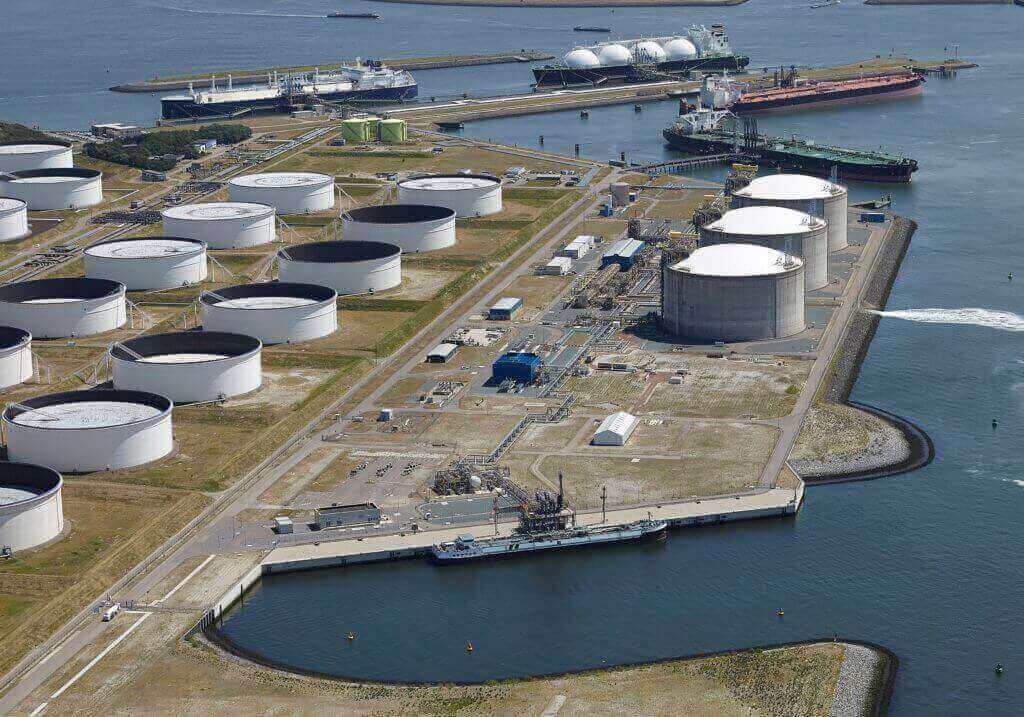
Saudi Aramco, the world’s top oil exporter, seeks global investors for its $100 billion Jafurah gas project.
If successful, Aramco will retain majority ownership of the assets and remain the operator, similar to previous infrastructure deals involving its oil and gas pipeline subsidiaries.
This move is part of Saudi Arabia’s strategy to diversify its economy under Vision 2030.
The Jafurah project is critical to Saudi Aramco’s ambitions to boost its gas production capacity by 60% by 2030 from 2021 levels. Ultimately, the project will make Aramco a significant global gas player.
Jafurah is the largest shale gas project outside the United States. Saudi Aramco wants to commence production this year and ramp up to 2 billion cubic feet daily by 2030. In 2024, US shale gas production hit 80 billion cubic feet per day.
Understanding the Jafurah Gas Field
The Jafurah Gas Field is Saudi Arabia’s largest unconventional non-associated gas field.
The field is also one of the most ambitious shale gas projects globally.
Operated by Saudi Aramco, it is located in the Eastern Province and spans around 17,000 square kilometres.
Reserves
Jafurah holds over 229 trillion standard cubic feet (TCF) of natural gas and 75 billion barrels of condensates. Thus, Jafurah is the largest shale gas field in the Middle East.
Production Capacity Goals by 2030
Saudi Aramco plans to ramp up production from the Jafurah field to
- 2 billion cubic feet/day (BCFD) of gas
- 418 million cubic feet/day of ethane
- 630,000 barrels/day of natural gas liquids & condensates
Timeline
- February 2020: Saudi Crown Prince Mohammed bin Salman approved the development of the $110 billion Jafurah.
- June 2024: Saudi Aramco awarded contracts worth over $25 billion regarding Jafurah development.
- 2025 (Expected): First commercial production of sales gas to commence. Phase 1 is expected to produce 200 million standard cubic feet daily.
- 2026–2028: Construction of additional gas processing plants, pipeline networks, NGL recovery systems, and storage facilities (Saudi Aramco’s Master Gas System).
- 2030: Achieve full production target of:
- 2 billion cubic feet/day (BCFD) of gas
- 418 million cubic feet/day of ethane
- 630,000 barrels/day of natural gas liquids & condensates
- Full integration of Saudi Aramco’s Master Gas System and downstream petrochemical complexes
- Post-2030 and Beyond: LNG exports, blue hydrogen production.
Infrastructure and Development
The development of Jafurah includes extensive infrastructure, such as:
- Gas processing plants to separate sales gas, natural gas liquids (NGLs), ethane, and condensates.
- Natural Gas Liquids (NGL) fractionation facilities
- A gas compression system to maintain optimal flow and pressure across the pipeline infrastructure.
- Approximately 1,500 kilometres of pipelines. The pipelines will transport gas and liquids from the Jafurah field to downstream processing units and export terminals.
- Facilities for carbon capture, utilization, and storage.
- Hydrogen production units.
The Potential Benefits of Investor Participation in Jafurah
For Saudi Aramco and the Kingdom
The potential deal around Jafurah will enable Aramco to raise funds amid falling oil prices due to OPEC+’s decision to increase output and global trade tensions due to US tariffs.
Amid these challenges, Aramco posted a Q1-2025 net profit of $26.01 billion, down from $27.3 billion in Q1 2024. However, it beat analyst expectations of $25.36 billion for Q1.
Saudi Aramco has a strong track record of developing its oil and gas infrastructure through foreign investments.
For instance, BlackRock and EIG were among investor groups that took minority stakes in Aramco’s oil and gas pipeline networks in two separate deals in 2021, helping Aramco raise roughly $28 billion. While Blackrock took a 49% stake in Aramco Gas Pipelines, EIG took a 49% stake in Aramco Oil Pipelines.
Therefore, external capital will enable Aramco to conserve cash flow for other strategic projects. With additional capital, Aramco can complete the project on time.
Aramco can adopt international players’ advanced technologies, operational best practices, and management expertise. A diversified ownership structure can boost confidence among stakeholders, including global energy markets.
For Investors
Investors gain access to Saudi Arabia’s largest unconventional gas reserves.
In addition, partnering with Saudi Aramco offers investors long-term exposure to Saudi Arabia’s energy sector, which is critical to global energy security.
Due to long-term contracts and regulated tariffs, infrastructure assets generally generate predictable cash flows.
With growing domestic demand for power generation and potential export opportunities (LNG, hydrogen), investors could benefit from multiple revenue streams.
Strategic Importance and Economic Impact of the Jafurah Project
The Jafurah project is a key component of Saudi Arabia’s Vision 2030, which seeks to boost gas production by 60% from 2021 levels.
Saudi Arabia’s growing population and industrial sector have led to rising gas consumption, especially for electricity generation and industrial feedstock.
Thus, developing the gas field will enable the generation of electricity to power homes, factories, and cities. The project would also lay the foundations for significant gas exports to Asia in the future.
Beyond gas production, the Jafurah field is also forecast to generate 630,000 barrels of gas liquids daily and 418 million cubic feet of ethane.
These by-products will support Saudi Arabia’s vital petrochemical industries, further bolstering its position as a global energy leader.
Overall, the project aims to bolster Saudi Arabia’s petrochemical and fertilizer industries and meet the growing power demand for electricity generation.
According to Saudi Aramco’s CEO, the Jafurah project is envisioned to contribute about $23 billion to Saudi Arabia’s GDP.
In the long term, integrating Jafurah’s gas and NGL production into global supply chains will boost Saudi Arabia’s energy portfolio, diversify revenue sources, and bolster its geopolitical influence.
-

 Business News5 months ago
Business News5 months agoNigeria’s Oil and Gas Reserves 2025 Reach 37 billion barrels & 210.5 TCF
-

 Analysis & Opinions5 months ago
Analysis & Opinions5 months agoTop Oil Producing States in Nigeria
-
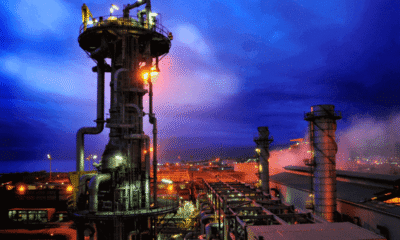
 Gas4 months ago
Gas4 months agoNLNG Enters a Gas Supply Deal with Seplat Energy
-
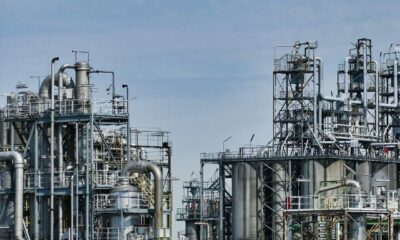
 Analysis & Opinions5 months ago
Analysis & Opinions5 months agoComplete List of All Refineries Operating in the UK
-
 Oil5 months ago
Oil5 months agoCrude Oil Prices May 5, 2025: Brent & WTI Rates
-
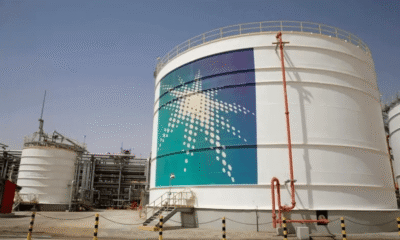
 Oil5 months ago
Oil5 months agoSaudi Aramco Increases June Oil Prices For Asia Amid OPEC+ Supply Hike





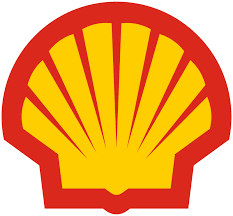

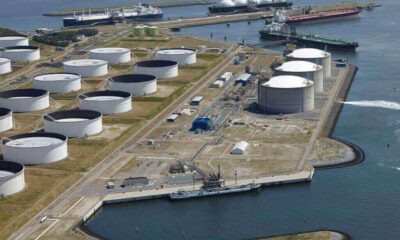


Pingback: Natural Gas Prices May 27, 2025: US, UK & Europe - Nigeria Oil Digest